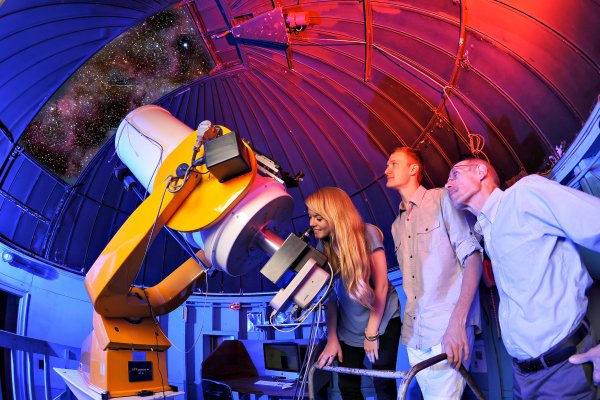Experiential Learning
Discover your inner scientist.
Valpo’s physics graduates become successful in their careers because of the extensive hands-on research experience they gain before graduation. Lab classes, student-faculty research, and cooperative education opportunities all provide students a chance to apply their knowledge to real-world situations.
Collaborative Research
All of the department’s faculty are also active researchers and use their projects to mentor students. Professors and students regularly co-publish and present their findings from projects in the following sub-fields:
Independent Research
Every student majoring in the Department of Physics and Astronomy completes a senior research project before graduation. This work develops their research skills, analysis, and the communication of scientific findings.
In addition to writing a final report, students present their research at the Physics Colloquium. This has the additional benefit of allowing incoming students to learn about the process from their first year, creating a culture that celebrates student research.
Opportunities to Present Research
Students have the opportunity to share their research at regional and national conferences and at Valpo’s annual Symposium On Undergraduate Research and Creative Expression. Recent presentations by physics and astronomy students include:
- A Long-Term Variability Study of Dying Low- and Intermediate-Mass Stars
- PMMA Mechanical Test for the Medium Scale High Voltage Apparatus (MSHV)
- The Effect of Lightning on Tropospheric Ozone Concentrations Over Valparaiso, Ind. in 2006 and 2007
- A First-Principle Study of Small Neutral and Anionic Silver Halide Clusters
- Compatibility of Photomultiplier Tube Operation with SQUIDs for a neutron EDM Experiment
- Measuring Azimuthal Angular Resolutions in p↑+p → jet + X and p↑+ p → jet + π± + X
- Measuring Quantum Conductance in Gold Nanowires
- Measuring the Cosmic Ray Energy Spectrum
- Characterizing the Frequency and Seasonal Dependence of the Sea Breeze in Houston, Texas and Its Impact on Surface Ozone
- Using π0’s to Understand Proton Spin Structure through Polarized p+p Collisions at 1 < η < 2 and √s = 200 GeV at STAR
